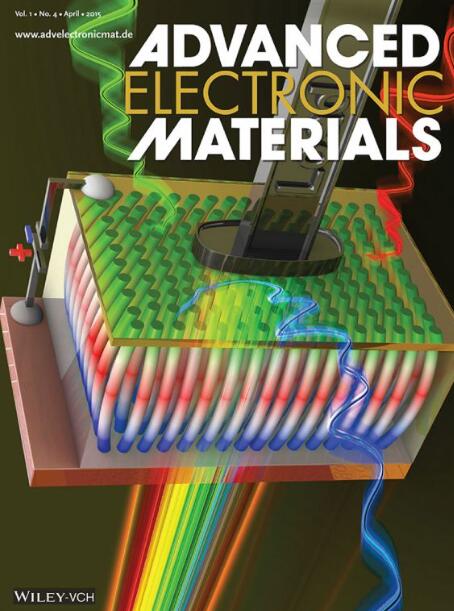In Situ Generated Silver Nanoparticles on Boron Nitride Nanosheets Followed by Silane Modification in High-Performance Epoxy Nanocomposites for Advanced Packaging Applications
IF 5.3
2区 材料科学
Q2 MATERIALS SCIENCE, MULTIDISCIPLINARY
引用次数: 0
Abstract
The increasing power density and miniaturization of modern electronic devices have underscored the critical need for efficient thermal management solutions. Boron nitride nanosheets (BNNS) have emerged as promising fillers for thermally conductive epoxy based composite. However, the improvement of composite thermal conductivity is often constrained by interfacial thermal resistance (ITR) at filler-filler and filler-matrix interfaces. The smooth and inert surface of BNNS exacerbates this challenge. To address these issues, silver nanoparticles (AgNPs) are in situ synthesized on BNNS surfaces through a simple annealing process. The BNNS-Ag fillers are subsequently modified using 3-(Mercaptopropyl)triethoxysilane (MPTS) to enhance filler-polymer matrix interactions through thiol-silver and silane-epoxy reaction. This dual modification strategy reduces ITR at both filler-filler and filler-matrix interfaces, enabling the epoxy nanocomposite to achieve a thermal conductivity of 1.64 W (m·K)−1 at 30 wt.% filler loading, representing an 811.1% improvement compared to neat epoxy. Furthermore, the BNNS-AgNPs@MPTS nanocomposite exhibits excellent electrical properties. Meanwhile, both experimental studies and simulations have demonstrated the promising potential of epoxy nanocomposites as high-performance thermal interface materials (TIMs). These findings provide a novel approach to overcoming interfacial thermal resistance while maintaining high electrical insulation, advancing the design of polymer composites for next-generation advanced electronic packaging applications.在氮化硼纳米片上原位生成纳米银并进行硅烷改性的高性能环氧纳米复合材料的先进封装应用
随着现代电子设备的功率密度和小型化程度不断提高,对高效热管理解决方案的需求日益迫切。氮化硼纳米片是一种很有前途的导电环氧基复合材料填料。然而,复合材料导热系数的提高往往受到填料-填料和填料-基体界面的界面热阻(ITR)的限制。BNNS的光滑和惰性表面加剧了这一挑战。为了解决这些问题,通过简单的退火工艺在BNNS表面原位合成了银纳米粒子(AgNPs)。随后用3-(巯基丙基)三乙氧基硅烷(MPTS)对BNNS-Ag填料进行改性,通过巯基-银和硅烷-环氧反应增强填料与聚合物基体的相互作用。这种双重改性策略降低了填料-填料和填料-基体界面的ITR,使环氧纳米复合材料在30 wt.%填料负荷下的导热系数达到1.64 W (m·K)−1,与纯环氧树脂相比提高了811.1%。此外,BNNS-AgNPs@MPTS纳米复合材料表现出优异的电学性能。同时,实验研究和模拟都证明了环氧纳米复合材料作为高性能热界面材料(TIMs)的潜力。这些发现提供了一种新的方法来克服界面热阻,同时保持高电绝缘性,推进下一代先进电子封装应用的聚合物复合材料的设计。
本文章由计算机程序翻译,如有差异,请以英文原文为准。
求助全文
约1分钟内获得全文
求助全文
来源期刊

Advanced Electronic Materials
NANOSCIENCE & NANOTECHNOLOGYMATERIALS SCIE-MATERIALS SCIENCE, MULTIDISCIPLINARY
CiteScore
11.00
自引率
3.20%
发文量
433
期刊介绍:
Advanced Electronic Materials is an interdisciplinary forum for peer-reviewed, high-quality, high-impact research in the fields of materials science, physics, and engineering of electronic and magnetic materials. It includes research on physics and physical properties of electronic and magnetic materials, spintronics, electronics, device physics and engineering, micro- and nano-electromechanical systems, and organic electronics, in addition to fundamental research.
 求助内容:
求助内容: 应助结果提醒方式:
应助结果提醒方式:


